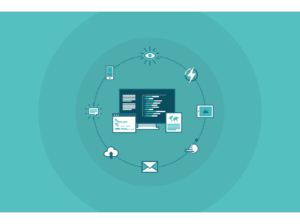
Content marketing is one of the most effective digital marketing strategies that your brand can use to reach and engage more quality leads and customers. However, while great content can have the potential to drive more conversions and increase brand awareness over time, it is of little use if your audience can’t find it, or don’t know it exists.
To get consistent leads and conversions from your blogs, ebooks, newsletters, webinars and other content assets that you are creating, you need a strong and informed content distribution strategy (alongside a solid content production plan).
What is content distribution?
Content distribution, according to HubSpot, is defined as:
“The process of sharing, publishing and promoting your content. It’s how you provide your content to your audience members for their consumption through various channels and media formats.”
These channels can be organised into three groups: owned, earned and paid.
- Owned content distribution - this includes distributing content to channels your company owns, such as your blog, email newsletter, social media or website.
- Earned content distribution - or shared distribution channels, are when third parties promote your content. These third parties could be, for example, customers, journalists or anyone else who shares your content for free.
- Paid content distribution - paid distribution channels refer to when you pay for distribution. This payment could take many forms, but most commonly works on a cost-per-click model, where the owner of the content pays a certain amount every time someone clicks to view it.
In short, content distribution is the process of promoting your content to targeted, specific audiences with the aim of increasing engagement or conversions.
Why do I need a content distribution strategy?
Because simply creating good content isn’t enough. While SEO best practices can help drive relevant traffic to your content, it is not enough on its own to ensure your content is reaching the right audiences. A distribution strategy allows you to proactively reach out to a targeted audience - which is likely going to be an audience that will find your content useful or interesting, or a group that might need your product or service.
According to Buzzsumo, 50% of content gets eight shares or less, reinforcing the need for strategic content distribution, to increase the engagement of your audience with the content you’re creating. Not only this, but a good strategy aligns your content team and helps set benchmarks and concrete goals to aim for when creating and publishing your work.
If you needed further motivation to start plotting your distribution plan, recent statistics reveal that 70% of marketers lack a content strategy - so imagine how few have a content distribution plan! You therefore need to be getting ahead of the game, and create a plan that works, and aligns with the goals of your business.
What makes a great content distribution strategy?
Do your research
The first step in creating an effective strategy is to research your target audience, so you know exactly who you want to be sharing content with.
A great place to start is to build a buyer persona (a profile of your ideal customer), in order to know as much about your ideal customers and target audience as possible. Collect as much data about your current website visitors, followers and customers. Using tools such as Google Analytics, or social media analytics, you can note your audience’s age, location, interests and more. To build your buyer persona further, collect feedback from your existing customers to understand their current pain points and thoughts on the content you’re currently creating. Feel free to use our buyer persona template if you’d like to give it a go.
You can then use this buyer persona and customer data to inform your strategy when targeting specific audiences with your content.
Set goals and KPIs
After building a relevant buyer persona, you can begin to set key performance indicators (KPIs) so that you can effectively measure the performance of your content against your business or strategy goals.
Think about what metrics you want to use to measure how well you are meeting your KPIs. For example, if you have a key performance indicator of traffic or reach, you might think about using unique page views as a metric.
SMART goals are a great way of making your content goals clear and measurable.
SMART goals are:
Specific - eg. I want to increase our website’s organic traffic
Measurable - eg. I want 20 new backlinks to the site
Achievable - eg. We’re already achieving 5-10 backlinks without a strategy, so 20 is a realistic figure to achieve with a strategy
Relevant - eg. This goal aligns with our broader business goal of increasing brand awareness and customer base
Time-bound - eg. I want 20 new backlinks over the next 80 days
Ensure that these goals and metrics are specific to the type of content and distribution channel you adopt.
Decide on your content types and distribution channels
After you’ve defined your target audience, and the KPIs you want to achieve through your content distribution, you can examine the different content distribution methods to determine which ones are best suited for your overall business goals.
Social media channels are a great platform to share content with followers of your brand. However, bear in mind which platforms are most suited to the types of content you’re promoting. For example, an e-book might not be best advertised on Instagram, but work really well on LinkedIn. Always keep your target audience in mind when thinking about the language and tone of voice you’ll be using.
Email marketing is also a great way to distribute content. Though not as glamorous as social, email allows you to share content with people who already have a relationship with your brand.
To ensure your content gets out on the right distribution channels, there are a number of easy-to-use tools to help you. These include (but are not limited to):
- Hootsuite
- HubSpot
- Buffer
- Click To Tweet
- Medium
- Contently
- GaggleAmp
Measure and evaluate
The final step in creating a content distribution plan that works, is to measure and evaluate your strategy in accordance with how well your content is performing against those KPIs and goals. Which pieces are driving the most traffic? Which types of content are attracting the most visitors to your site?
Using performance data, you can evaluate and rework your plan as and when you see fit.
Apply these top tips to create your own content distribution strategy that gets your content seen by your audience. Rather outsource your content marketing strategies? Take a look at our content marketing services or get in touch to chat about your needs.







